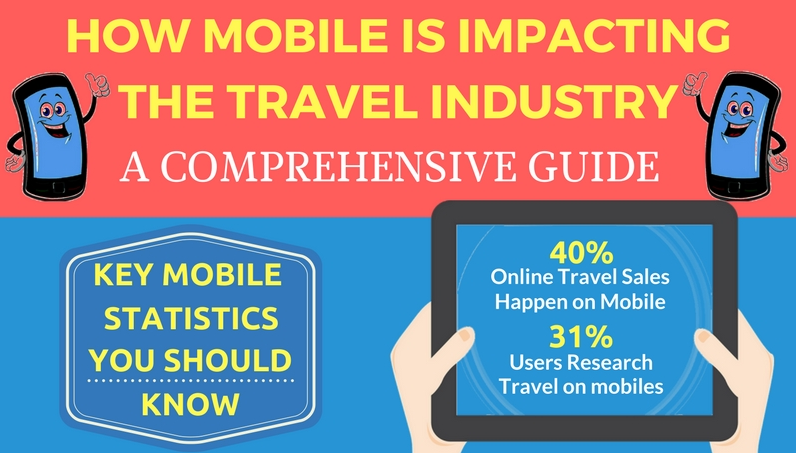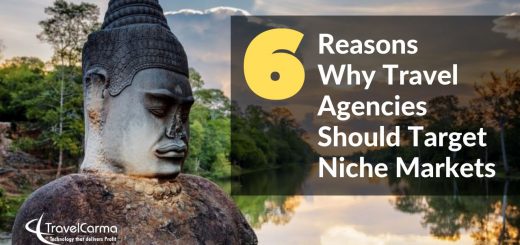Guide to Successful Email Marketing for the Tourism Industry

In one of our earlier posts we described the benefits of email marketing for a travel business. In this article we would like to talk about some of the ways in which they can use email as a marketing tool.
So if you’re a travel business looking to use email as part of your marketing efforts but aren’t sure how to get the most out of it, we hope this article will serve as a useful guide.
How do I get started?
Before you can start an email campaign, you need a list of people to whom you can send the emails. We recommend building a list organically, as opposed to buying one, as the latter can cause massive bounce rates, complaints and even get you into legal trouble.
There are several ways in which you can build a list properly:
- Via user registrations on your website: If you have an online booking portal where customers can book travel online, you can have an email opt-in checkbox on the registration page letting visitors know that they will be automatically signed-onto your mailing list when they complete the registration and that they should uncheck the box to opt-out.
- Place a sign-up form on your site: You can place a form on every page of your web site at a prominent location where your visitors can see it. It should be conspicuous so they don’t have to hunt for it but not obstructive to their navigation, which may end up irritating them and cause them to drop off.
- Blog sidebar: If you have a travel blog, place an opt-in form in the sidebar to let your readers subscribe to updates from your blog. If you use a blog service such as WordPress/Blogspot, you will get that by default.
- Facebook Page: You can add a sign-up form using a third-party service such as AWeber to your business page where your followers and new visitors can subscribe to your mailing list.
- Offline: In addition to building a list online, you can do it offline too, as you deal with your clients in person. Some of the ways you can build a list offline are: Including information about your newsletter or deals on your brochures, asking for permission to email your customers on any contact forms they fill out, asking attendees at travel expos to fill out an email sign up sheet with their names and email addresses.
Okay, so I’ve built my email list. Now what?
Once you have built a list of subscribers, there are a various type of emails you can send to your subscribers from time to time. Here’s a few of them:
- Welcome emails: these are a great way to welcome new subscribers to your company and introduce them to your brand once they sign-up. These emails can be automated or can be sent manually with customized messaging depending on the user. Your welcome emails can include as many messages as you want and sent at time intervals that you specify. These introductory emails are a great way to lay the foundation of potentially long-lasting relationships.
- Newsletters: Newsletters help you build your brand’s credibility in the minds of your customers and website visitors. It’s best to set a regular newsletter routine so your subscribers know when to expect your mail in their inbox. Email newsletters are perfect for sharing information your customers will benefit from – highlighting emerging destinations, daily deals, company updates, sharing customer trip stories as well as useful travel tips. Here are a few ideas for newsletter topics that can benefit your customers and demonstrate your expertise in travel: ‘Tips for getting the best discounts on flights and hotels’, ‘Ways to travel light for longer trips’, ‘Advice on Traveling with infants’, ‘How to travel internationally on a budget’ etc.
- Special Offers announcements: One-time broadcasts can be used to announce special offers, limited-period deals or a new vacation package you’re offering. Broadcasts are best for time-sensitive emails and occasional announcements.
Birthday Greetings: You can also send emails to your customers wishing them happy birthday. This helps strengthen their relationship with you and is likely to keep them loyal to you. You can send them such emails manually(if you have a few customers) or automate them – send emails automatically based on the date of birth field in your list, without having to think about it!
- Cross-promotional emails: email is great for cross-selling and upselling other products related to or similar to the items a customer has bought from you. Eg, once a customer books a flight+ hotel from your site, you can write to them offering other services such as airport parking, car hire or insurance. You can also add more weight to your call-to-action by telling them that they can avail an additional 10% off if they click through from that particular email. You can also send them promotional emails for other destinations similar to the one they booked with you which they can consider for their next holiday or recommend to their friends/relatives.
- Emails to recover abandoned bookings: The tourism industry has one of the highest shopping cart abandonment rates(around 80%), even higher than the retailers. You can use email to remind customers of unbooked items lying in their cart. Maybe they are carrying out price comparisons across other sites, so it would be a good idea to send them an email letting them know of any price drops in their added items. This may just nudge them into completing the purchase.
- Retargeting to inactive subscribers: As studies have shown, retaining a customer is a lot cheaper than acquiring a new customer. Retargeting existing customers through personalized mails will keep them happy and help you keep your marketing costs down. You can reconnect with customers who are inactive and up-sell to your active customers. You could even split your database into the segments and then send targeted emails to each segment. For example, you can segment customers by email activity: Those that opened your mail – You can entice them to click by offering a special promotion or a personalized birthday message. For the ones who didn’t open your email, you can use A/B testing and Multivariate testing: Try a new subject line and/or test different days/times to achieve your targeted click-throughs. Finally, the recipients that clicked your email – the fact that they clicked shows they’re interested but maybe the price is not attractive enough for them to book or the holiday isn’t relevant to them now. You could write them a mail saying, ‘We saw you looking at our ‘Bali package’ and thought we’d offer you some alternatives’ or ‘Only for Today – an extra 20% off Hotels in Miami’.
Some interesting Email Marketing Statistics

Source: customerminds.com
Great! I’m ready to launch a campaign. Is there anything I should keep in mind before I do that?
Yes, there are certain fundamental pointers which every travel business must remember before running an email campaign. Following these practices can significantly improve the chances of your campaign becoming a success.
- Segment your list: One of the best things about email is that you can easily target your emails by creating multiple lists based on different segments. They can be your existing customers, prospects, people who have expressed an interest in a specific service or on the basis of their location. You can send different types of email to these different segments depending on their tastes and characteristics. This will help you maximize your opens and click-throughs.
- Use a genuine ‘from name’: As a large number of recipients decide whether to open your email or not based purely on who it’s from, it’s essential that the ‘from’ name and the ‘from’ email address should clearly indicate who you are. If they see an email from weird/unfamiliar name and address, they are likely to just delete or dump it into their spam folder.
- Optimize your subject line: Your subject line is as important as your from-name, if not more. The ideal subject line should be short yet compelling. The most important words in the message should be in the first 30-40 characters as long subject lines will be trimmed by the recipient’s email client and your message will not get across. This will cause extremely low open rates. Your subscribers probably receive hundreds of emails every day, so you have to make your email stand out with a great subject line, so make sure you spend a lot of time on it. A/B split testing is a great way to see what subject line works and what doesn’t. Trust us, you can spend hours and days drafting the perfect email copy but if your subject line isn’t up to the mark, all that effort, time and money will go to waste.
- Choose your campaign day and time wisely: You should run your campaign at a time when your recipients are most likely to read it. The best time and days for B2B emails is generally Monday-Wednesday between 10 am and 4 pm but is may vary so test it. For consumer emails, after 7 pm on weekdays or weekends tend to work best. We would like to repeat again that this can vary heavily from business to business so you just have to test different days/times and see what gets you the best results.
The ideas discussed here are not exhaustive by any stretch of the imagination. Email marketing is a vast subject and a lot more can be said about it. However, we’ve tried to cover some of the most important aspects of email marketing and the various email techniques you can use to maximize the potential of your campaigns.
If you have any other useful thoughts/suggestions, please feel free to share them in the comments section below. We wish you great success with your next email campaign. Good luck!









Great tips. I especially like the one about segmentation
Thanks Noel! We’re glad you liked the article 🙂
Fantastic article! A great introduction to e-mail marketing. I think the key with sending emails is to be always delivering value in some way – and make sure that this value is clearly communicated in the subject line! Travel businesses and hotels are sending a lot of emails these days, but open rates remain low for the majority of them. (E.g asking for reviews, likes of Facebook, etc.) Instead of just asking, ALWAYS try to offer value in your email then later on in the email, have you ‘ask’ or call to action.
Hi Kelsey,
You’re absolutely right! Email marketing should be about offering value to your readers and not as a means to push product down their throats. The former helps build an audience and the latter pushes people away from your brand.